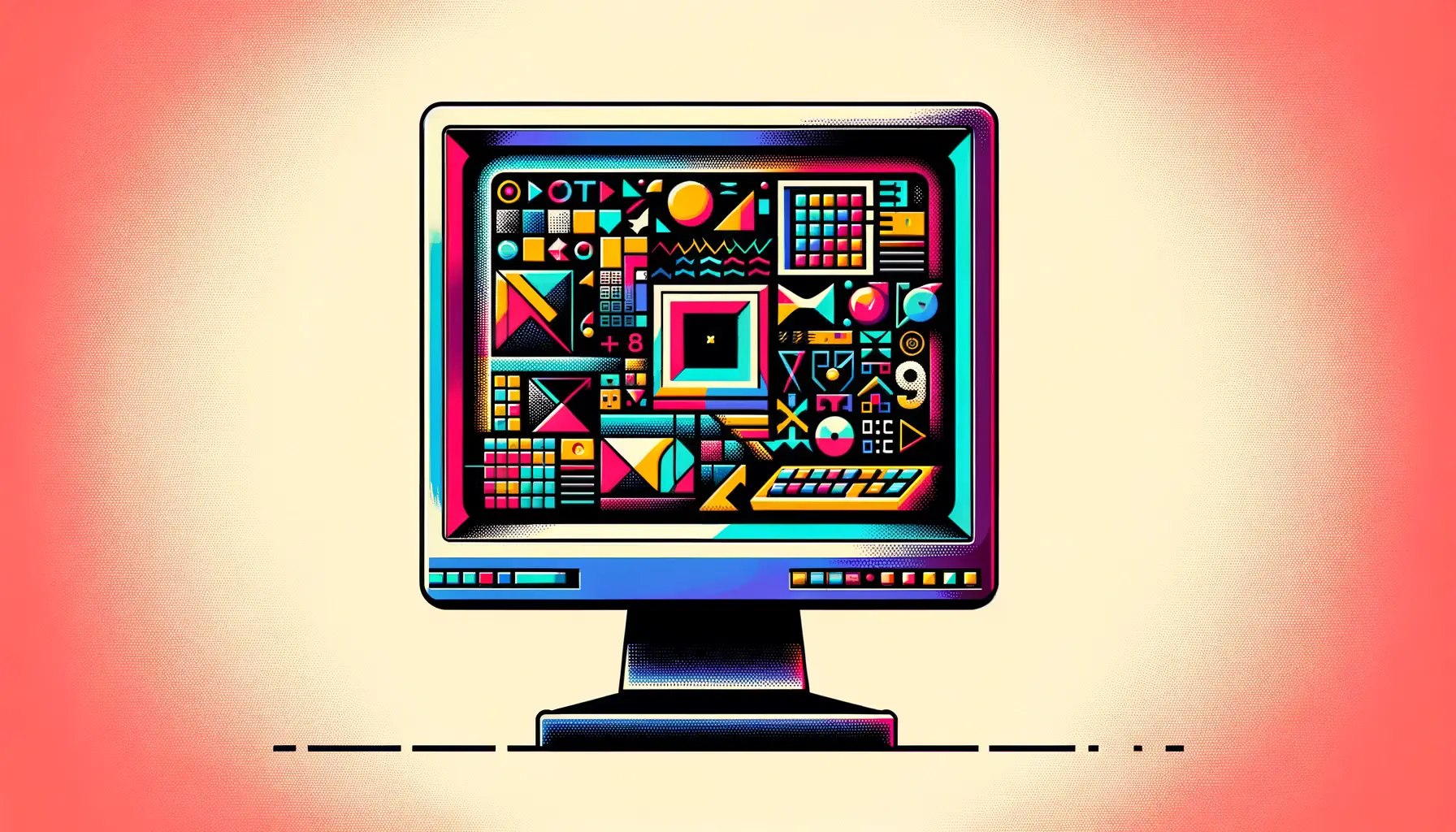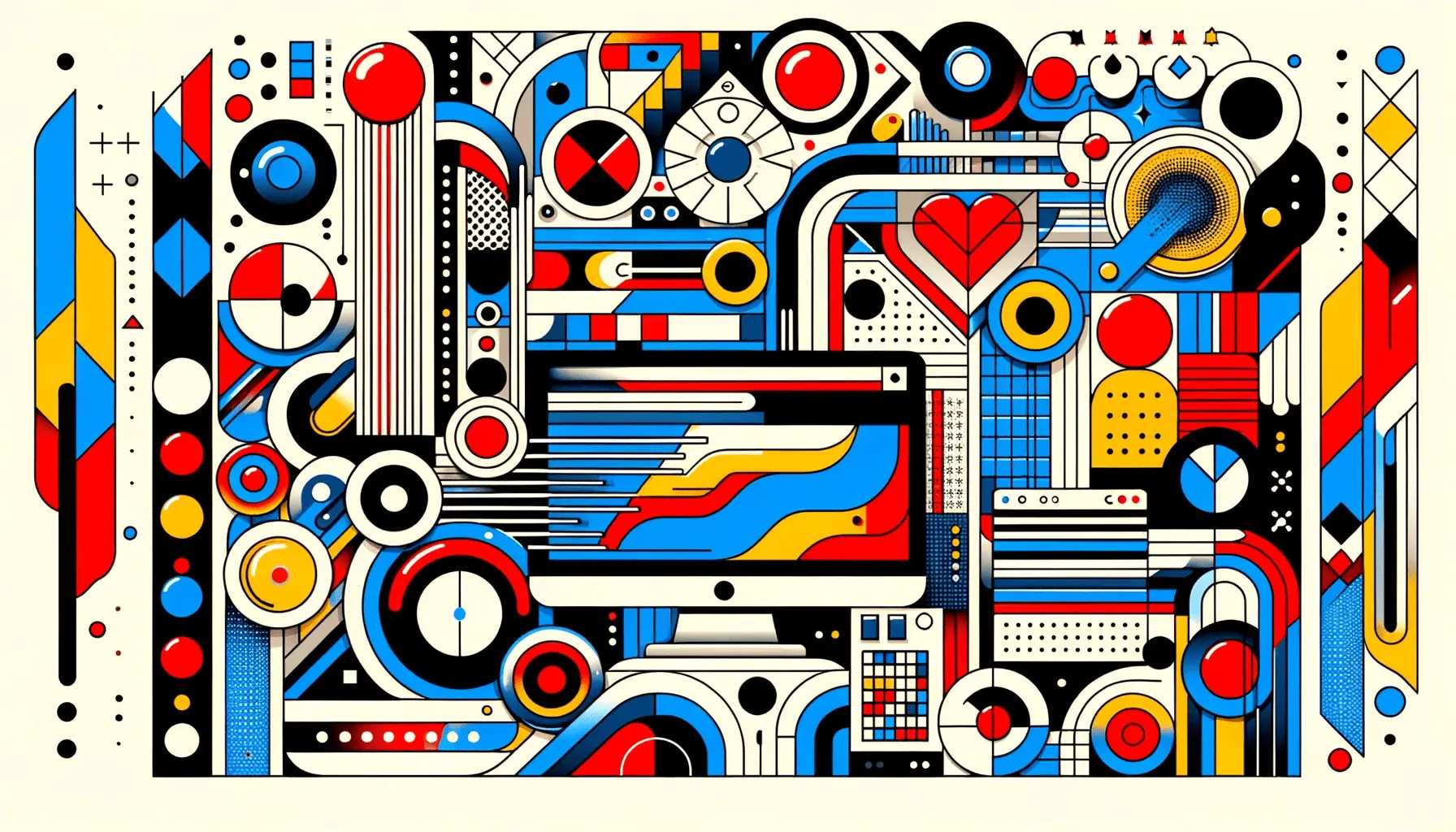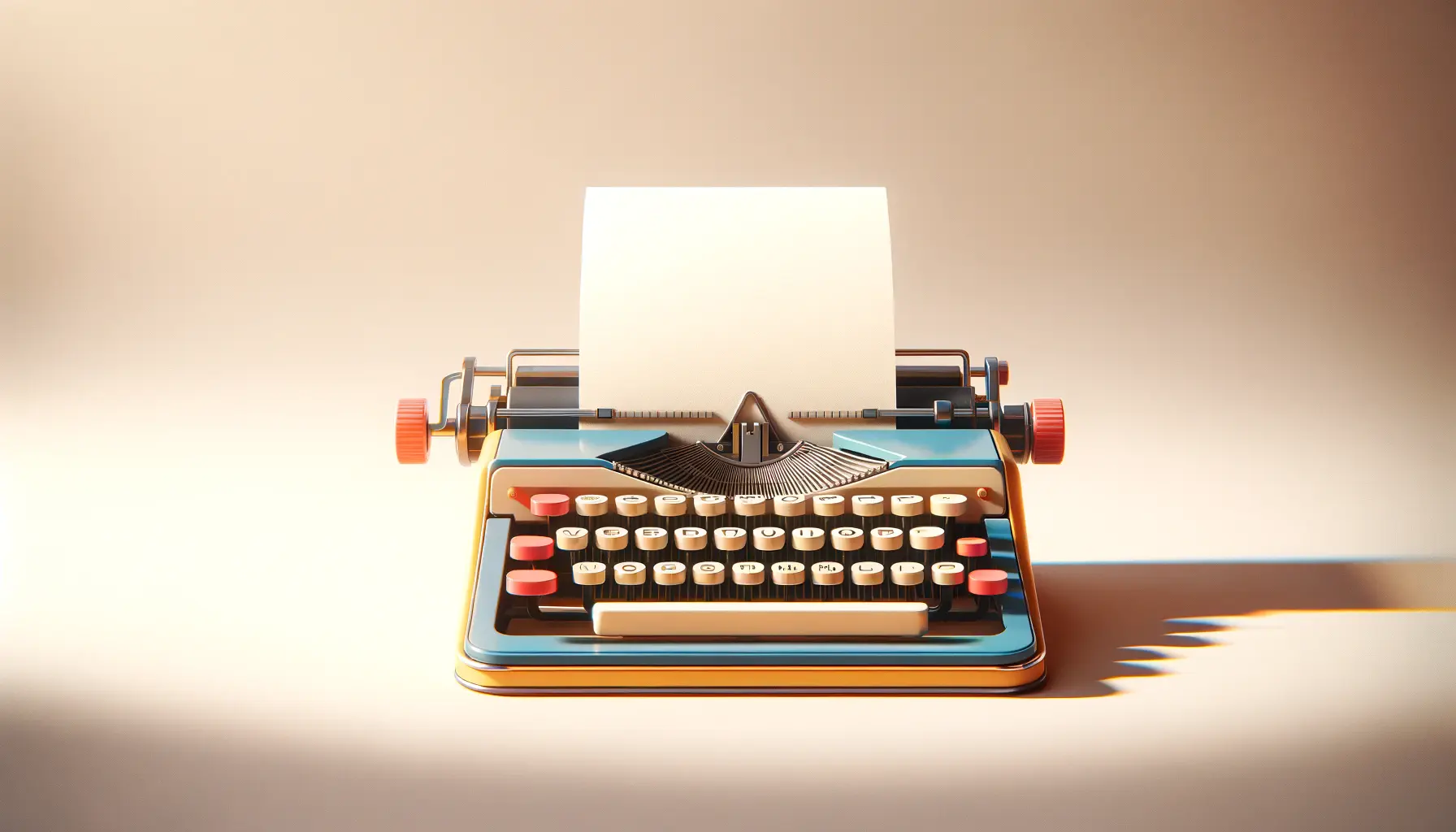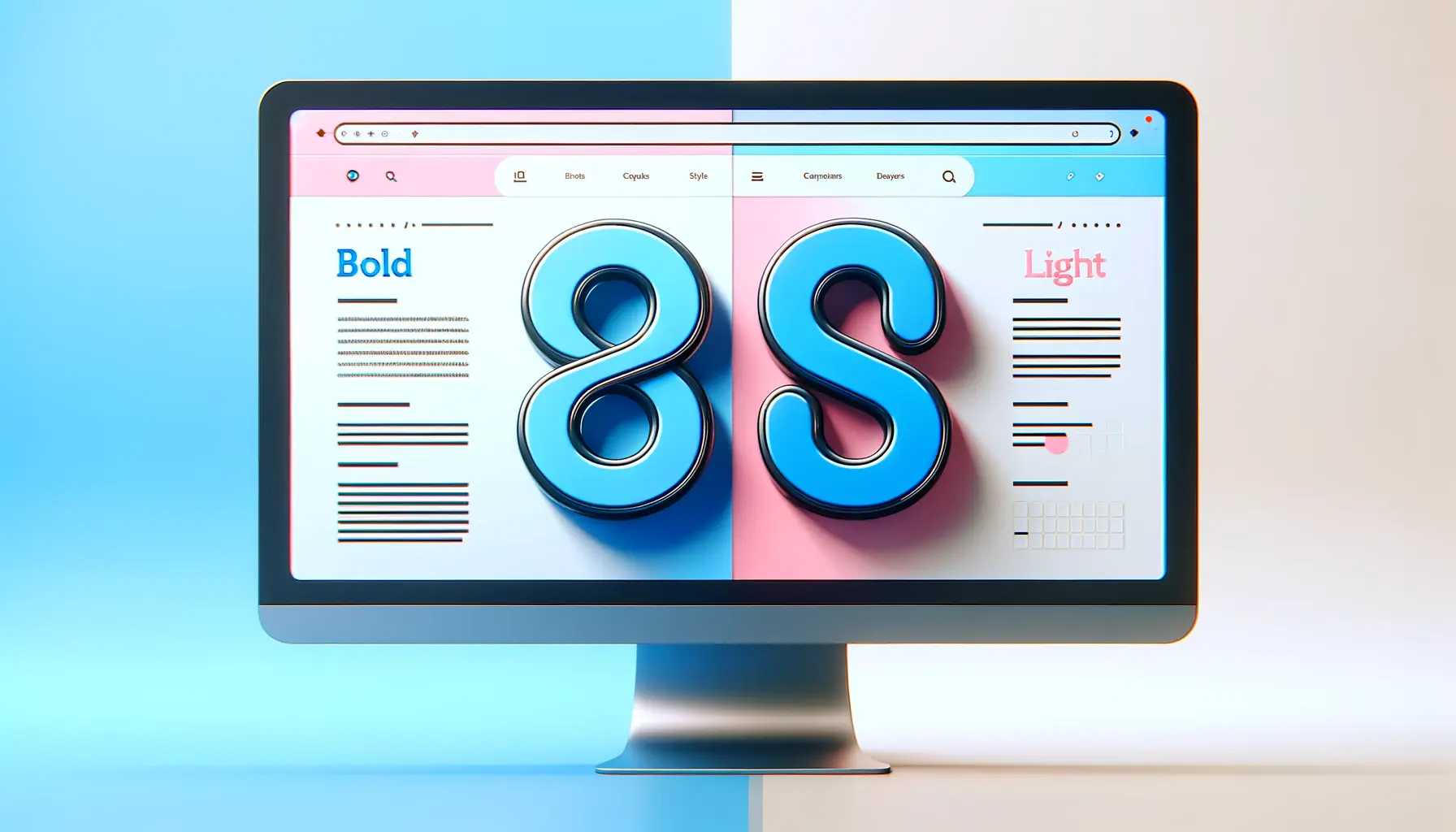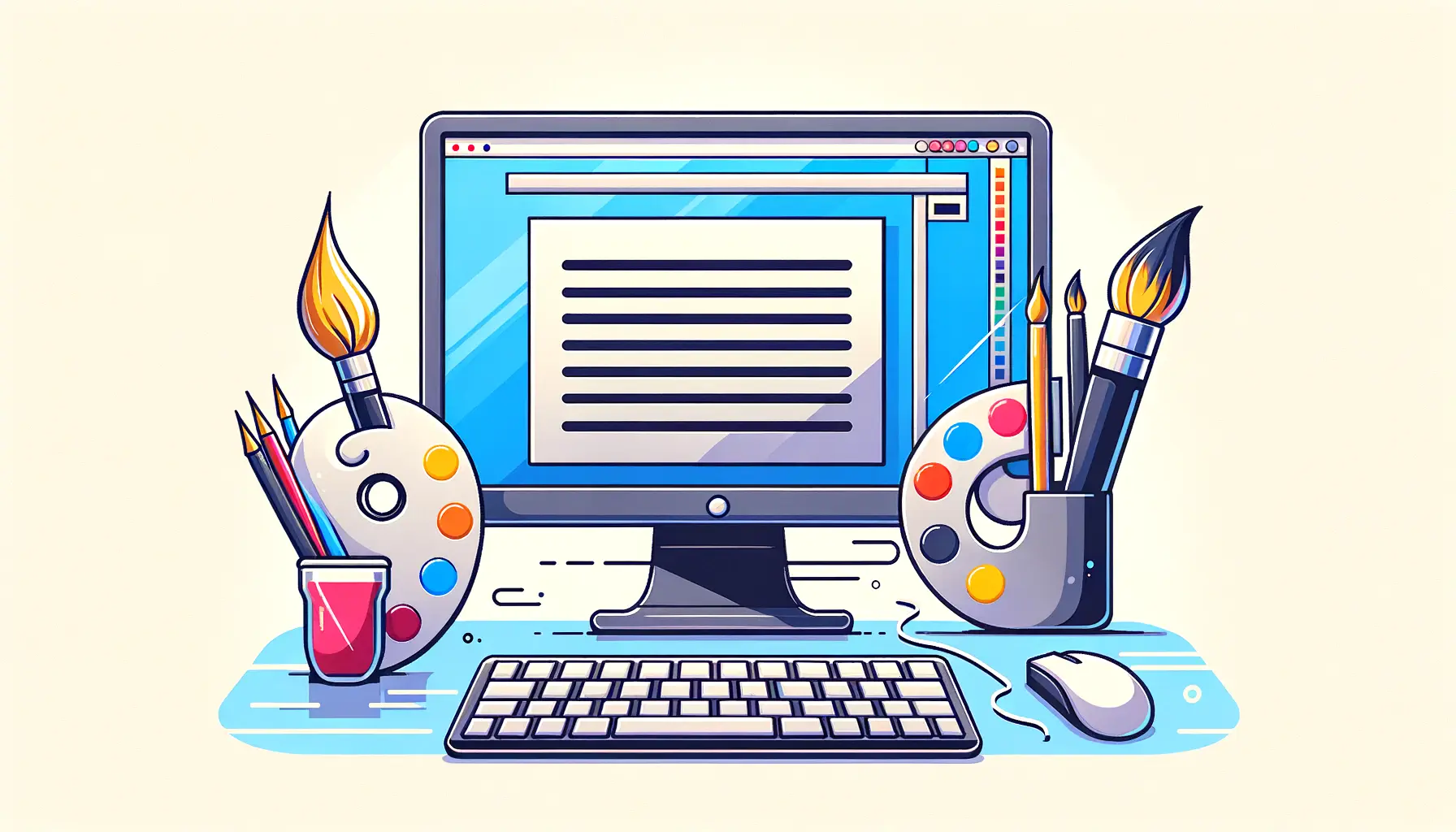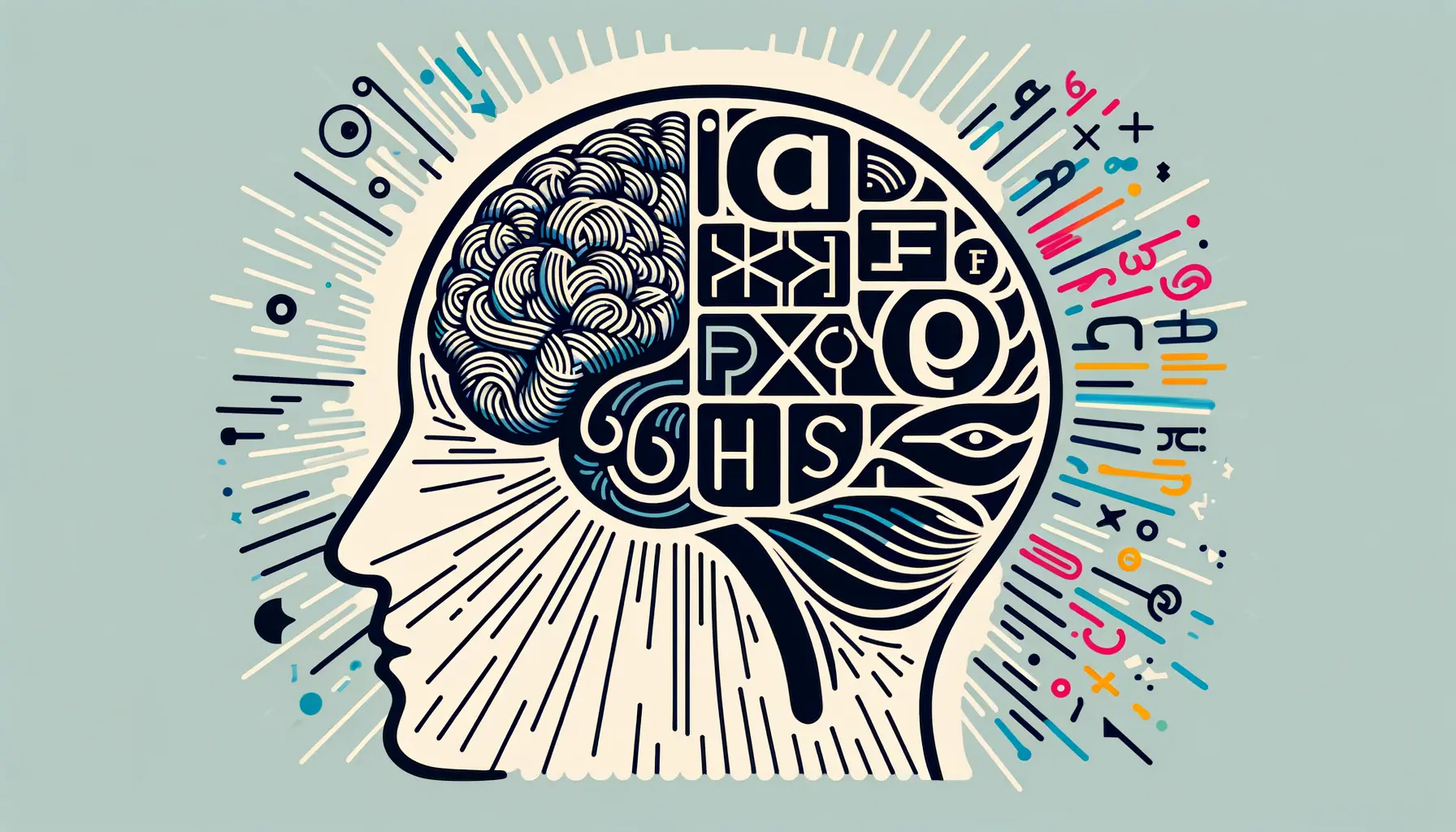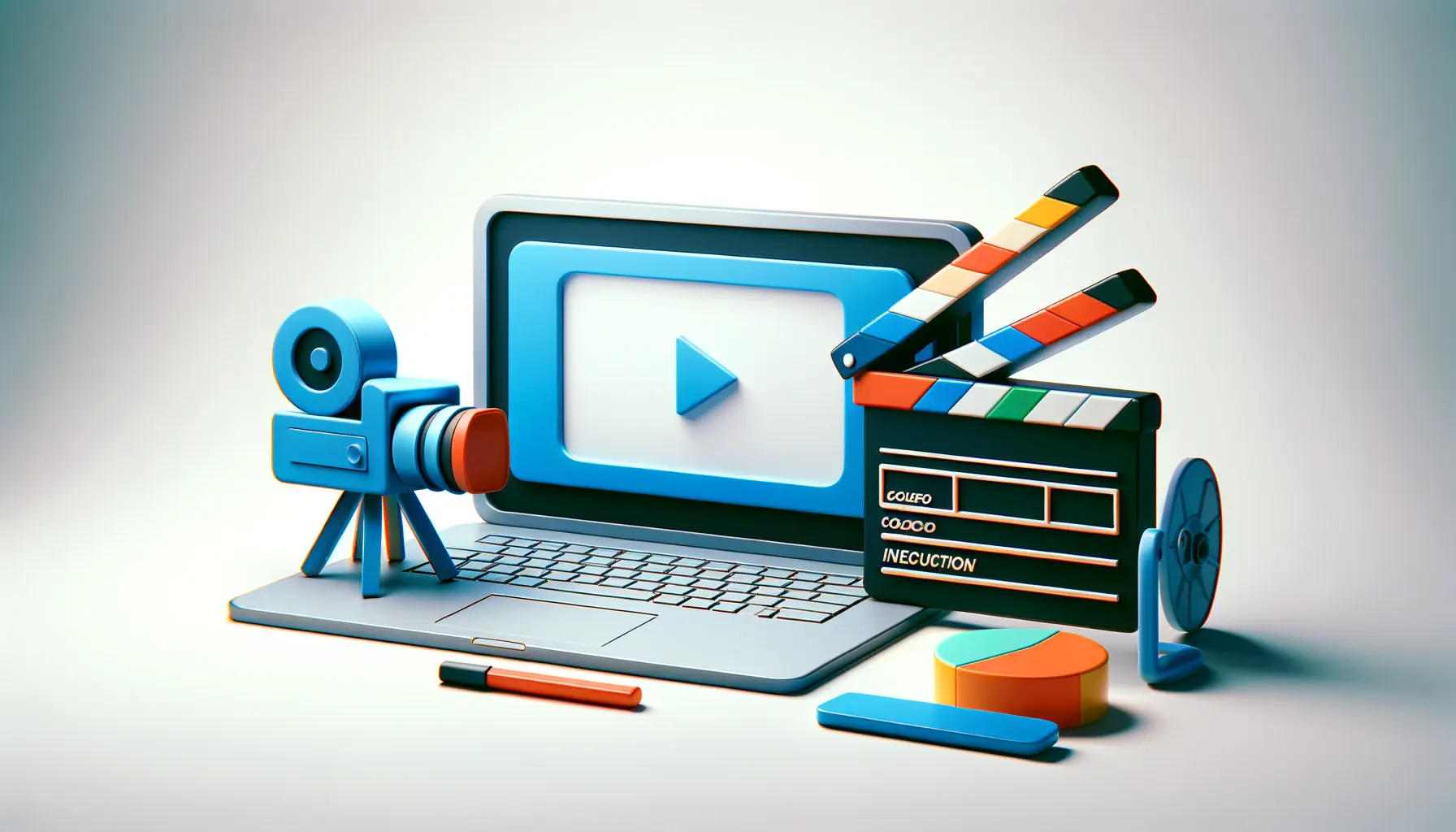The resurgence of retro aesthetics in web design has brought with it a renewed appreciation for typography that evokes a sense of nostalgia and warmth.
Among the fonts leading this revival, Dwight stands out as a particularly charming choice.
Its unique characteristics and versatility make it a favorite among designers looking to infuse their projects with a retro vibe.
This article delves into the world of Dwight font, exploring its origins, attributes, and how it has become synonymous with retro web design.
Typography plays a crucial role in the design and user experience of a website.
It’s not just about readability; the choice of font can significantly affect the mood, tone, and overall impression of a site.
Dwight, with its distinctive style, offers a blend of vintage charm and modernity, making it an ideal choice for projects aiming to strike this balance.
Its ability to transport viewers back in time, while still fitting seamlessly into contemporary designs, is what sets Dwight apart in the typography landscape.
- The Rise of Retro Typography in Web Design
- Implementing Dwight Font in Modern Web Projects
- Optimizing User Experience with Dwight Font
- Design Trends Influenced by Dwight Font
- Challenges and Solutions in Using Dwight Font
- Future of Typography: Dwight’s Place in Web Design
- Best Practices for Integrating Dwight Font into Web Design
- Embracing the Timeless Appeal of Dwight Font in Web Design
- Dwight Font in Retro Web Design FAQs
The Rise of Retro Typography in Web Design
The digital world’s fast-paced evolution has seen trends come and go, but the allure of retro design elements remains constant.
Retro typography, characterized by fonts that recall the design sensibilities of the past, has seen a resurgence in popularity.
This trend is not merely about nostalgia; it’s a response to the craving for authenticity and personal touch in an increasingly digitalized world.
Dwight font, with its retro roots and modern flair, perfectly encapsulates this movement.
Retro typography, including Dwight, offers a visual break from the sleek, minimalist designs that have dominated the web.
It introduces warmth, personality, and a hint of whimsy, making websites feel more accessible and human.
The use of such fonts is a deliberate choice to stand out and evoke specific emotions, aiming to create a memorable user experience.
Dwight, in particular, with its unique quirks and historical nods, brings a story to the designs it graces, adding depth beyond mere aesthetics.
Characteristics of Dwight Font
Dwight font is distinguished by its bold, yet whimsical appearance.
It draws inspiration from mid-20th-century typography, a period known for its experimental approach to letter forms and layout.
The font features a mix of rounded and angular edges, creating a dynamic and engaging visual rhythm.
This blend of shapes gives Dwight its retro feel, reminiscent of vintage signage and print advertising from the era.
Another notable characteristic of Dwight is its versatility.
Despite its distinct retro vibe, the font can be adapted to a wide range of design contexts.
From bold headlines to subtle body text, Dwight maintains its legibility and charm.
This adaptability makes it a valuable asset for web designers looking to incorporate retro elements without compromising on functionality or user experience.
Incorporating Dwight font into your web design not only adds a touch of retro charm but also enhances the overall user experience by making it more engaging and memorable.
Implementing Dwight Font in Modern Web Projects
The integration of Dwight font into modern web design projects requires a thoughtful approach to ensure that the retro aesthetic complements the site’s overall theme and purpose.
Here are some key strategies for effectively incorporating Dwight into your web design:
Choosing the Right Context for Dwight
Identifying the appropriate context for using Dwight is crucial.
This font excels in settings that aim to evoke a sense of nostalgia or where a playful, yet sophisticated tone is desired.
Ideal applications include:
- Landing pages for vintage or retro-themed products.
- Branding elements for cafes, boutiques, and other businesses seeking a nostalgic flair.
- Editorial websites or blogs focusing on historical content, fashion, or design.
By carefully selecting the context, designers can maximize the impact of Dwight, ensuring it enhances the site’s narrative and aesthetic appeal.
Pairing Dwight with Complementary Fonts
To maintain balance and readability in your design, it’s important to pair Dwight with fonts that complement its personality without overshadowing it.
Consider the following combinations:
- A clean, sans-serif font for body text to contrast Dwight’s decorative nature.
- A monospaced font for callouts or captions, adding a modern twist to the retro feel.
- Another retro-inspired font for subheadings, ensuring thematic consistency while varying visual interest.
Effective font pairing is key to creating a cohesive and visually appealing design that leverages Dwight’s charm.
Adjusting Layout and Color Schemes
The layout and color scheme of a website play significant roles in highlighting Dwight’s retro qualities.
To make the most of this font, consider the following design elements:
- Use warm, muted color palettes that complement the vintage feel of Dwight.
- Incorporate classic design motifs and textures, such as grainy backgrounds or faded images, to enhance the retro vibe.
- Experiment with asymmetrical layouts and overlapping elements to mimic the dynamic design trends of the past.
These design choices can amplify the retro aesthetic, making Dwight font a standout feature of your website.
Exploring the potential of Dwight font in web design not only pays homage to the rich history of typography but also offers a unique way to connect with audiences through nostalgic design elements.
Optimizing User Experience with Dwight Font
While the aesthetic appeal of Dwight font is undeniable, ensuring an optimal user experience (UX) is paramount.
The use of retro fonts like Dwight should enhance, not hinder, the usability and accessibility of a website.
Here are strategies to optimize UX when incorporating Dwight into your web design:
Ensuring Legibility and Readability
The distinctive features of Dwight, while visually appealing, can pose challenges to legibility if not used judiciously.
To ensure that text remains accessible to all users, consider the following:
- Reserve Dwight for headings and short pieces of text where its unique style can shine without compromising readability.
- Adjust letter spacing and line height to improve legibility, especially in larger blocks of text.
- Use high-contrast color combinations to ensure that text stands out against background elements.
By prioritizing legibility, designers can leverage Dwight’s retro charm without sacrificing user comfort and comprehension.
Balancing Aesthetics with Performance
The inclusion of custom fonts like Dwight can impact a website’s loading times and overall performance.
To balance aesthetics with efficiency:
- Optimize font files by limiting the number of font weights and styles loaded on the website.
- Consider using font display strategies such as ‘swap’ to minimize the perceived loading time of text content.
- Regularly test the website’s performance using tools like Google PageSpeed Insights to identify and address any issues related to font loading.
Maintaining a focus on performance ensures that the visual benefits of using Dwight do not come at the cost of user satisfaction.
Adapting Dwight for Responsive Design
As web access increasingly shifts to mobile devices, ensuring that Dwight font remains effective and attractive across all screen sizes is essential.
To achieve this:
- Adjust font sizes and line lengths for smaller screens to maintain readability and visual impact.
- Test the appearance of Dwight on various devices and browsers to ensure consistent rendering.
- Use media queries to dynamically adjust font properties based on the viewport size.
Responsive design considerations are crucial for ensuring that Dwight enhances the user experience across all platforms.
While Dwight font adds a unique retro flair to web design, its successful integration hinges on careful consideration of legibility, performance, and responsiveness.
Design Trends Influenced by Dwight Font
The influence of Dwight font extends beyond individual projects, shaping broader design trends within the digital landscape.
Its popularity underscores a collective yearning for designs that blend nostalgia with modernity, impacting various aspects of web and graphic design.
Here’s how Dwight font is influencing current design trends:
Retro-Modern Fusion
Dwight font embodies the retro-modern fusion trend, where designers merge vintage aesthetics with contemporary sensibilities.
This trend is evident in:
- Website layouts that combine classic typography with modern UX principles.
- Branding projects that use Dwight to evoke heritage while communicating forward-thinking values.
- Graphic elements that pair Dwight with minimalist icons and imagery, creating a balance between past and present.
This fusion approach allows brands to tell a richer story, connecting with audiences through a shared cultural memory while staying relevant in today’s digital age.
Nostalgic Branding
Brands seeking to evoke nostalgia or convey timelessness often turn to fonts like Dwight for their visual identity.
This trend includes:
- Packaging designs that use Dwight to suggest artisanal quality or historical authenticity.
- Marketing materials that leverage Dwight’s retro appeal to stand out in crowded digital feeds.
- Corporate branding that adopts Dwight to differentiate itself with a nod to the past, suggesting reliability and trustworthiness.
Nostalgic branding, powered by fonts like Dwight, helps companies establish a deeper emotional connection with their target audience.
Interactive and Dynamic Typography
The distinctive look of Dwight font lends itself well to interactive and dynamic web elements, inspiring trends such as:
- Animated text that uses Dwight’s unique character shapes to create engaging visual stories on web pages.
- Interactive typography where users can engage with Dwight-based text through hover effects, revealing hidden messages or changing colors.
- Scroll-triggered animations that bring Dwight text to life as the user navigates through a site, enhancing the storytelling aspect of web design.
These trends showcase the versatility of Dwight font, proving that retro-inspired typography can play a pivotal role in modern interactive design.
The resurgence of Dwight font in digital design reflects a broader trend towards blending historical elements with contemporary design practices, enriching the user experience and offering new avenues for creative expression.
Challenges and Solutions in Using Dwight Font
While the Dwight font offers unique opportunities to enhance web design with its retro charm, designers may encounter specific challenges when integrating it into their projects.
Addressing these challenges effectively is key to leveraging Dwight’s full potential without compromising on design quality or user experience.
Overcoming Overuse and Clichés
One of the main challenges with popular fonts like Dwight is the risk of overuse, leading to designs that feel clichéd or unoriginal.
To avoid this pitfall:
- Use Dwight sparingly and purposefully, ensuring it aligns with the project’s overall theme and message.
- Combine Dwight with less common fonts or custom typography to create a unique visual language for your brand or project.
- Experiment with unconventional color schemes, layouts, and graphic elements to refresh the retro aesthetic and keep it contemporary.
By thoughtfully integrating Dwight into your design, you can maintain originality and avoid falling into clichés.
Navigating Licensing and Usage Restrictions
Another challenge involves the legal considerations of using Dwight, particularly regarding licensing and usage rights.
To navigate these issues:
- Thoroughly research the licensing terms of Dwight font to ensure compliance with usage restrictions, whether for commercial or personal projects.
- Consider purchasing the appropriate license or exploring similar fonts with more flexible licensing options if necessary.
- Stay informed about font licensing best practices to protect your work and avoid potential legal complications.
Understanding and adhering to licensing requirements is crucial for using Dwight font ethically and legally in your designs.
Ensuring Cross-Platform Consistency
The varied rendering of fonts across different browsers and devices can affect the consistency of designs using Dwight.
To mitigate this issue:
- Test your design on multiple platforms and browsers to identify and address any inconsistencies in how Dwight is displayed.
- Use web-safe fonts or font replacement techniques as fallback options to ensure a cohesive user experience across all access points.
- Employ responsive design principles to adjust font sizes and spacing dynamically, ensuring readability and visual impact on any screen.
Ensuring cross-platform consistency helps maintain the integrity of your design and provides a seamless experience for all users.
Assuming that integrating Dwight font into your design will automatically result in a successful retro aesthetic can lead to missed opportunities for innovation and differentiation.
Future of Typography: Dwight’s Place in Web Design
The evolving landscape of web design continues to embrace the fusion of historical influences and contemporary trends, with typography playing a pivotal role in shaping the future of digital experiences.
Dwight font, with its unique blend of retro charm and modern versatility, is poised to remain a significant player in this dynamic field.
Here’s a look at the potential future of typography and Dwight’s place within it:
Increased Personalization and Brand Identity
As brands strive for deeper connections with their audiences, personalized typography like Dwight becomes a powerful tool for crafting unique brand identities.
The future will likely see:
- More brands adopting custom or niche fonts like Dwight to differentiate themselves in a crowded digital space.
- Increased use of typography to tell brand stories and convey values, with Dwight providing a distinct voice for retro-inspired narratives.
- Greater integration of typography into brand strategy, leveraging fonts like Dwight to enhance brand recognition and emotional engagement.
Dwight’s ability to evoke nostalgia while maintaining readability and charm makes it an ideal choice for brands looking to stand out and connect on a personal level.
Advancements in Responsive Typography
As web access shifts increasingly towards mobile and diverse devices, responsive typography becomes critical.
Dwight’s future in web design will be influenced by:
- Technological advancements allowing for more dynamic scaling and adaptation of fonts like Dwight across devices.
- Development of new tools and frameworks to facilitate the seamless integration of complex fonts into responsive designs.
- Innovative approaches to typography that prioritize user experience, ensuring that fonts like Dwight enhance rather than detract from mobile usability.
The ongoing improvements in responsive design technology will ensure that Dwight and similar fonts continue to play a vital role in creating engaging and accessible web experiences.
Emergence of New Typographic Trends
The future of web design will undoubtedly bring new typographic trends, with Dwight potentially inspiring or adapting to these shifts.
Possible directions include:
- The blending of retro and futuristic elements, with Dwight evolving to incorporate modern design features while retaining its vintage appeal.
- Increased experimentation with animated and interactive typography, using fonts like Dwight to create immersive web experiences.
- The resurgence of handcrafted and artisanal design elements, with Dwight serving as a bridge between traditional typography and digital expression.
As designers continue to explore the boundaries of creativity and technology, Dwight font is well-positioned to adapt and thrive in the ever-changing landscape of web design.
Dwight font’s enduring appeal lies in its ability to blend the warmth of retro design with the clarity and functionality required for modern web experiences, ensuring its relevance in the future of typography.
Best Practices for Integrating Dwight Font into Web Design
Successfully incorporating Dwight font into web design projects not only enhances the aesthetic appeal of a website but also contributes to a cohesive and engaging user experience.
To achieve this, designers must adhere to a set of best practices that ensure Dwight’s retro charm is fully realized while maintaining the site’s functionality and accessibility.
Here are essential guidelines for integrating Dwight font effectively:
Harmonizing Aesthetics with Usability
While Dwight’s distinctive style can significantly impact a website’s visual narrative, it’s crucial to balance aesthetic choices with usability concerns.
This includes:
- Limiting the use of Dwight to headings, logos, or other prominent elements where its character can shine without compromising text clarity.
- Ensuring sufficient contrast between text and background colors to keep content legible for all users, including those with visual impairments.
- Pairing Dwight with more neutral, readable fonts for body text to prevent visual fatigue and keep the website accessible.
By carefully considering how Dwight interacts with other design elements, designers can create visually appealing sites that are also user-friendly.
Adapting Dwight for Diverse Content Types
Dwight font can be versatile, but its application should be tailored to fit the content type and context within the website.
Strategies include:
- Customizing Dwight’s weight and size based on its role within the page, such as bolder and larger for headlines, and more subdued for call-to-actions.
- Using Dwight to accentuate key elements of the website, such as quotes, testimonials, or special announcements, where its impact can be maximized.
- Experimenting with letter spacing and kerning to enhance readability and aesthetic appeal, especially in more creative sections of the site.
Adapting Dwight to suit various content types ensures that its use remains effective and purposeful throughout the website.
Maintaining Brand Consistency
For brands looking to leverage Dwight font as part of their identity, consistency across all digital and print materials is key.
This involves:
- Developing a comprehensive style guide that specifies how and where Dwight should be used, including rules for color, size, and pairing with other fonts.
- Applying Dwight consistently across all brand touchpoints, from the website to social media, marketing materials, and offline collateral, to reinforce brand recognition.
- Regularly reviewing and updating the use of Dwight in brand materials to ensure it continues to align with the brand’s evolving identity and audience expectations.
Maintaining consistency in how Dwight is used strengthens the brand’s visual identity and enhances its memorability among the target audience.
Embracing Dwight font in web design is more than a stylistic choice; it’s an opportunity to infuse projects with personality and nostalgia while adhering to principles of good design and user experience.
Embracing the Timeless Appeal of Dwight Font in Web Design
The journey through the world of Dwight font in retro web design reveals a landscape where nostalgia meets modernity, creating a unique and engaging user experience.
Dwight’s charm lies not only in its visual appeal but also in its ability to evoke a sense of warmth and familiarity, making it a powerful tool for designers aiming to connect with their audience on a deeper level.
The Strategic Use of Dwight Font
Incorporating Dwight font into web design projects requires a strategic approach to ensure that its retro charm enhances rather than overwhelms the user experience.
From selecting the right context for its use to pairing it with complementary fonts and adjusting layout and color schemes, every decision made around Dwight should aim to balance aesthetics with usability.
The goal is to leverage Dwight’s unique qualities to create memorable web experiences that resonate with users.
Overcoming Challenges with Creativity and Care
While the use of Dwight font offers numerous opportunities for creative expression, it also presents challenges that require careful navigation.
Issues such as overuse, licensing restrictions, and cross-platform consistency can all impact the effectiveness of Dwight in a design project.
However, with the right strategies in place, these challenges can be overcome, allowing Dwight to shine as a distinctive element of web design that adds value and personality to digital spaces.
Looking Ahead: Dwight Font’s Role in the Future of Design
As we look to the future of web design, the role of typography, and Dwight font in particular, remains pivotal.
The trends towards increased personalization, advancements in responsive typography, and the emergence of new typographic trends all suggest that Dwight will continue to be a relevant and cherished choice for designers.
Its ability to adapt while maintaining its retro essence ensures that Dwight font will remain at the forefront of design innovation, helping to shape the digital landscapes of tomorrow.
Conclusion
The exploration of Dwight font in retro web design underscores the enduring appeal of typography that connects with users on an emotional level.
Dwight’s versatility, combined with its distinctive retro charm, makes it a timeless addition to any designer’s toolkit.
By embracing Dwight font, designers can create web experiences that not only stand out visually but also resonate deeply with users, proving that in the world of web design, looking back can indeed be a way to move forward.
Quality web design is key for a great website! Check out our service page to partner with an expert web design agency.
Dwight Font in Retro Web Design FAQs
Explore commonly asked questions about integrating Dwight font into retro web design projects.
Dwight font excels in headings, logos, and any design element where its unique retro charm can enhance the visual narrative of a website.
While primarily suited for display purposes, Dwight can be used for short body text if paired with ample line spacing and contrast for readability.
Dwight font adds a layer of personality and warmth, potentially improving user engagement by making the site feel more inviting and memorable.
Pair Dwight with simple, clean fonts for body text to maintain readability and balance the overall aesthetic of your web design.
Like any custom font, Dwight can impact loading times, but optimizing font files and using modern web loading techniques can mitigate this.
Yes, with proper implementation and testing, Dwight font can be effectively integrated into responsive designs, maintaining its appeal across devices.
Use Dwight in logos, headings, and marketing materials to weave a consistent thread of retro authenticity throughout a brand’s digital and print presence.
Always review and comply with the licensing terms for Dwight font, ensuring legal use in both commercial projects and personal websites.
